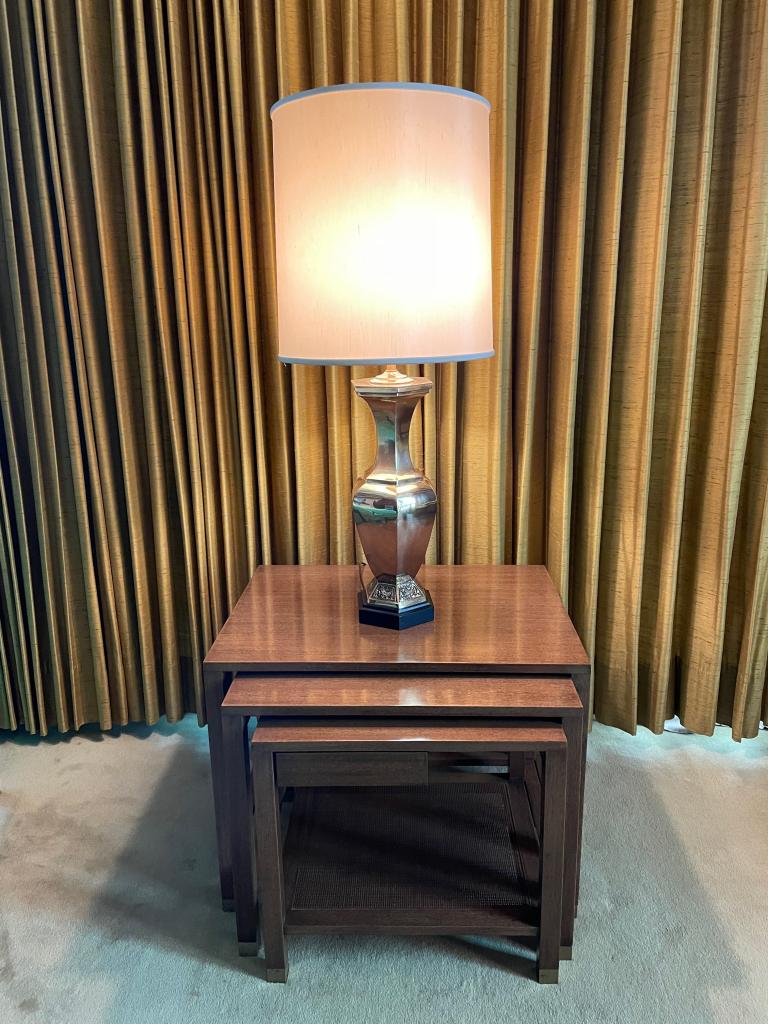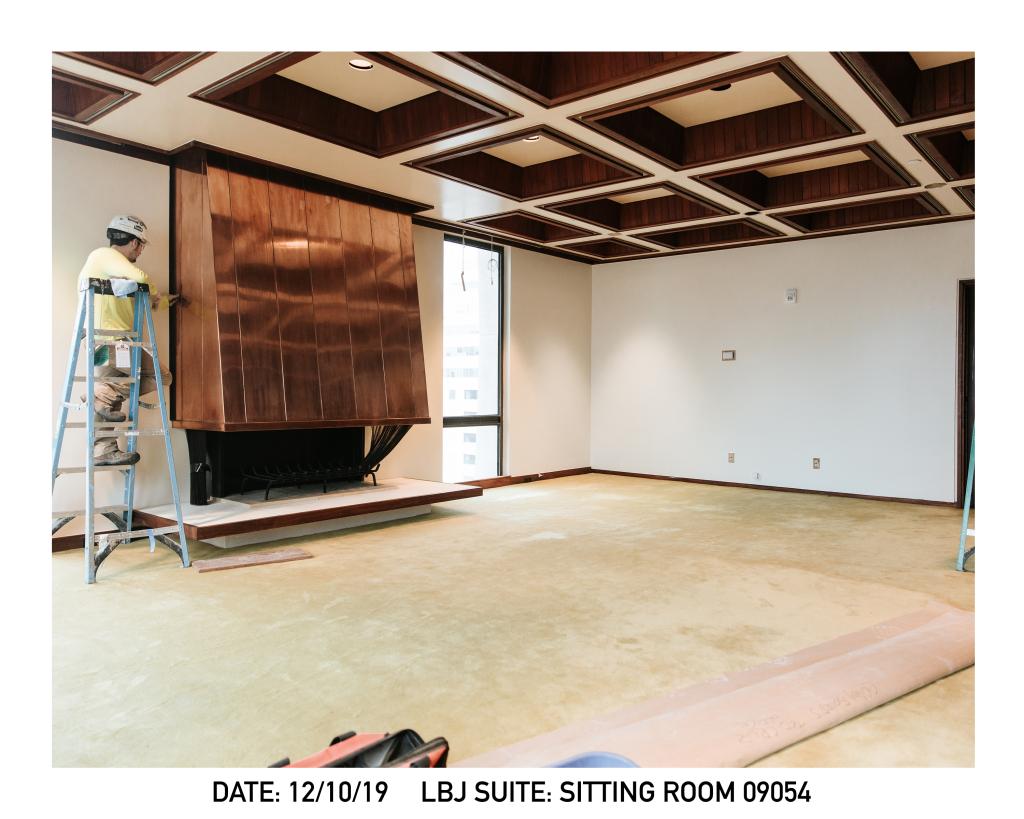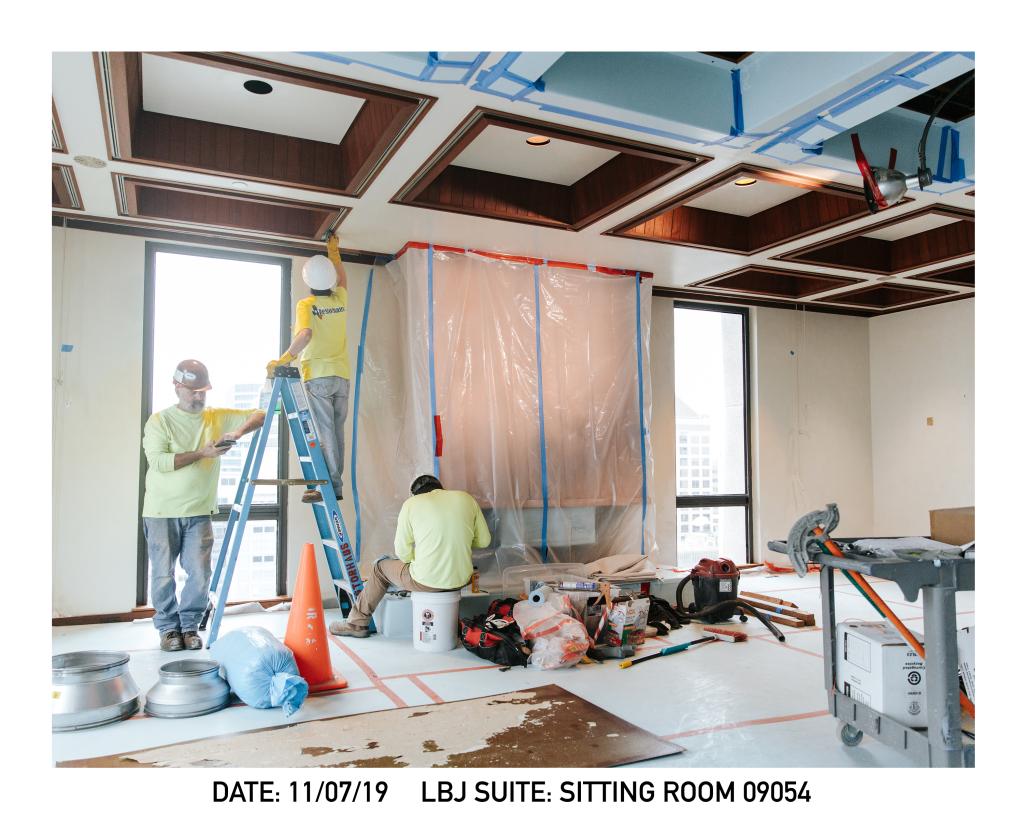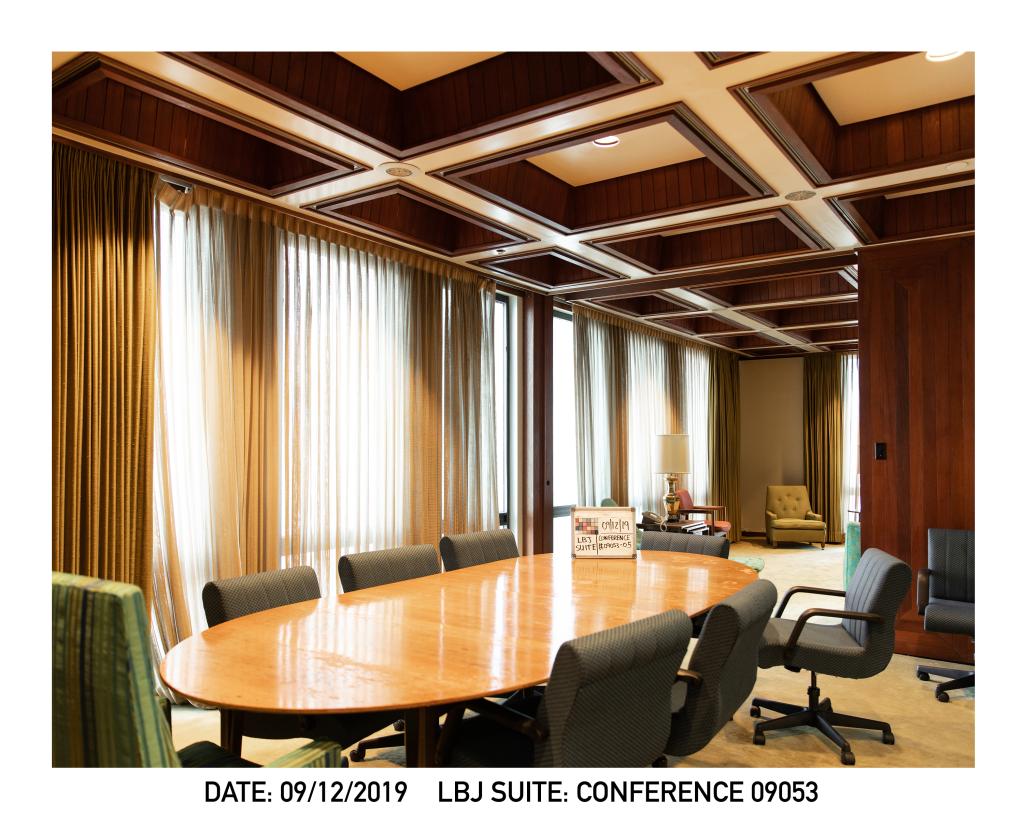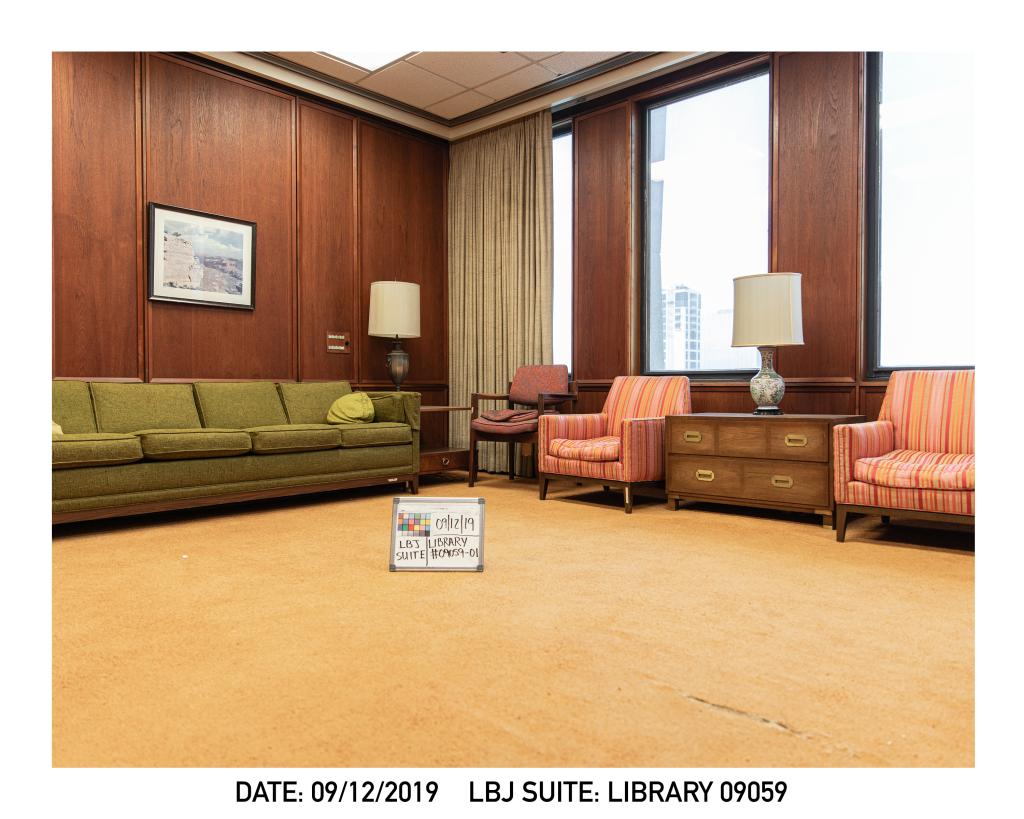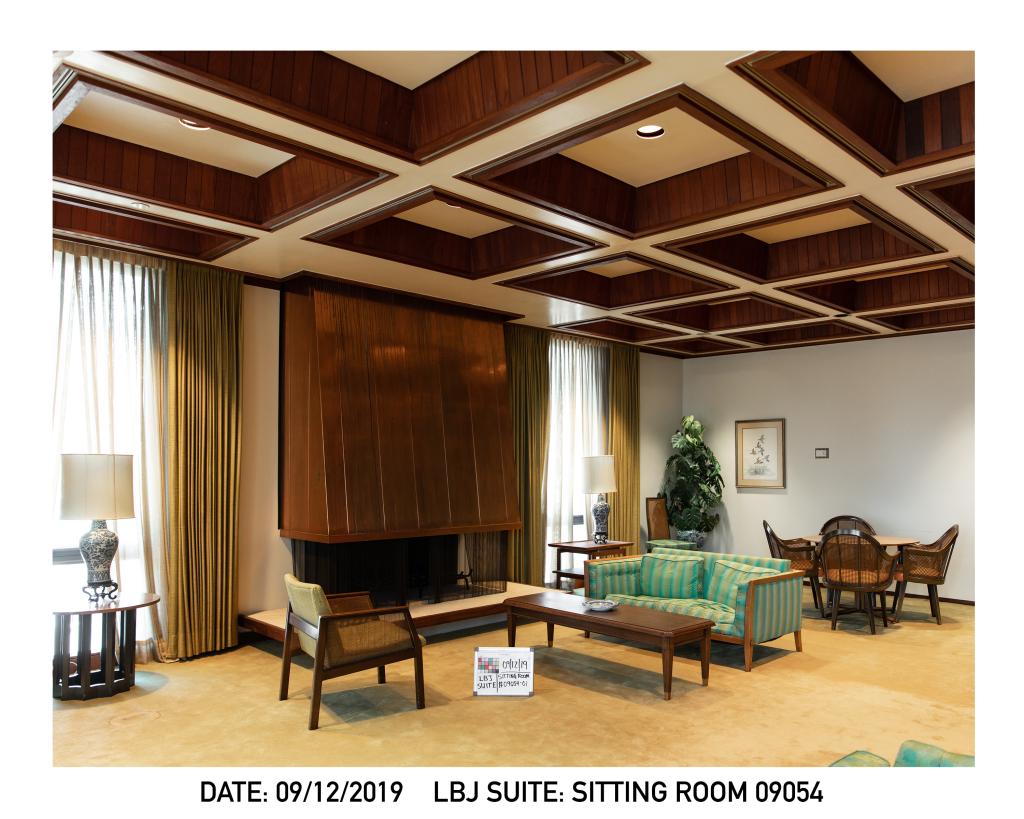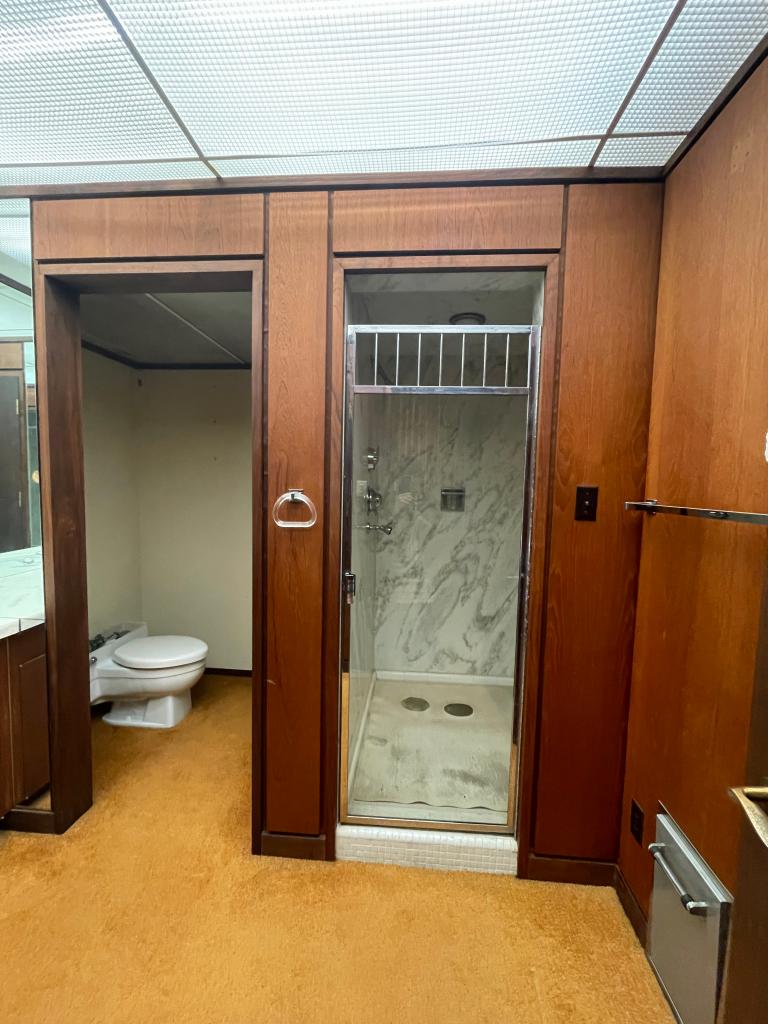The LBJ Suite: Preserving American History in Region 7
May is Historic Preservation Month, and GSA’s Greater Southwest Region is filled with places that tell the stories of the people and events woven into the fabric of American history. The Region’s Historic Preservation Team recently helped preserve one of those significant places.
On December 6, 1966, President Lyndon B. Johnson met with U.S. military leaders to discuss nuclear weapons. Just months before, the National Historic Preservation Act was passed, which would ultimately help preserve the location of the former president’s historic meeting more than 50 years later.
In 2022, GSA partnered with architecture, engineering, and design firm Cushing Terrell and Studio Six Art Conservation to restore and conserve furnishings inside the LBJ Suite, located in the historic J.J. Pickle Building in downtown Austin, Texas. President Johnson had offices in the Pickle Building before, during, and after his six-year presidency. He held many official meetings in the suite, which was located on the ninth floor.
Region 7 Historic Preservation and Fine Arts officer Hugo Gardea toured the space in 2017 as his team prepared for the J.J. Pickle Modernization Project. “When I first walked into the space it literally was a time capsule, and it still is a time capsule,” he said. “You walk in the space and you feel like LBJ just walked out the door. The furnishings, the feeling, the environment. It all speaks 1960s and some of the significant events that happened here.”
The preserved suite, which includes a living and dining room, private den, bathroom, and kitchen, retains a high degree of architectural integrity unique to the 1960s and to Johnson’s life and history. Touches of his personality, including a rocking chair, a shower with four heads, and a presidential blanket are displayed throughout the space. During a June 2023 interview, Brad Ford Smith, owner of and head conservator at Studio Six, and Stephanie Saunders, conservation technician at Studio Six, shared about how excited they were to discover “hidden pieces” throughout the conservation process.
“When we were first investigating the [library] space and we realized it was a sofa bed, we pulled it out and that’s when we found his presidential blanket,” Saunders said. “That was a super fun discovery and everyone was all excited.” Smith shared about other hidden pieces in the suite, like signed furniture. “When I was working on the [chair] legs, I had to roll back the upholstery and when I did it exposed the wood,” Smith said. “On the wood is a piece of tape and it’s got the name, address, and date of the person that did the upholstery on it. I think the date was September 8, 1964.”
The LBJ Suite is also a great example of mid-century modern styles in experimental furniture design. Visitors can see a mix of contemporary materials (plastic, metal) decorated in eye-popping patterns and colors, as well as modern home and office technology, such as a 1960s dishwasher, automatic doors, TVs, and a unique telecom system.
Preserving the architectural features and furnishings within the LBJ Suite was an important, yet at times, arduous task. The conservation team had to overcome numerous challenges and shift their treatment plan priorities throughout the conservation process. They had to delicately balance restoring furnishings with preserving their historic features and originality. For example, the team spent countless hours repairing the outdated mechanical system connected to the 9-foot drapes throughout the suite in order to make them operable. “I don’t think any of us understood the weight of the fabrics with just how expansive the windows were,” Saunders said. “So that was a bit of a more difficult project, the weight combined with the fabric particles flying through the air.”
The suite’s furnishings were made with high-quality textiles made from traditional materials (like silk) and were a unique, vibrant color palette. However, many of those bold colors and materials aren’t represented in present-day fabric stores, which made it challenging for the team to match the original colors and fabrics. Severely degraded foam was also inside the chairs and pillows, posing a unique challenge as the team attempted to replace the damaged foam while retaining the textiles that contained it.
The conservation of the furnishings and objects in the space was completed in June 2023, 60 years after Johnson took office. He made the suite of offices in the Pickle Building his official local office shortly after. The LBJ Suite gives visitors an opportunity to experience the essence of this historic time and president and is an incredible example of the importance of preserving the places that have shaped American history.
See the LBJ Suite in this walkthrough video.

 U.S. General Services Administration
U.S. General Services Administration
